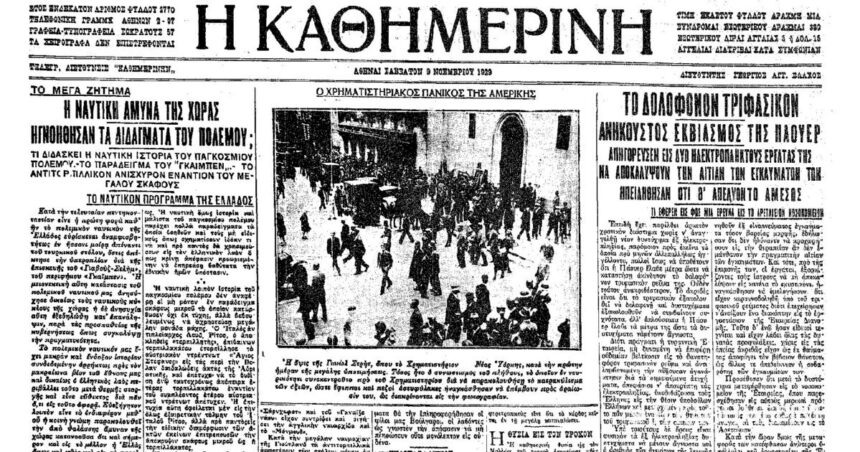The 1920s found the United States in a period of prosperity: American industry was at a productive fever pitch, the country’s agricultural production was booming, and thousands of Americans were leaving the countryside in search of lucrative job opportunities in the big cities. In the aftermath of World War I, victorious America had emerged as a global superpower. The new industries—from automobiles and aviation to telecommunications and radio—provided the US with the capital it needed to become the main creditor nation among the victorious powers of the Great War and to take an active part in rebuilding a weakened Europe with heavy exports. of funds.
In addition, post-war optimism caused many Americans, professional investors and non-professionals, to buy stocks in droves, their value reaching unprecedented prices. The price of the Dow Jones index had risen from 63 points in August 1921 to 381 in September 1929. However, the immeasurable stock market, which was mostly done with loan funds (money that investors had borrowed from banks), it led to the creation of a stock market “bubble” that was ready to burst – and was to affect the entire credit system not only of the US, but of the entire world. On the other hand, the investments that were made were speculative and followed the logic-illusion that stock prices would always rise, making even more people buy stocks, which were rapidly overvalued thus contributing to the inflation of the “bubble”.
Meanwhile, rising stock prices allowed companies to obtain cheap cash, which they could invest in their own production, fueling a vicious cycle of overproduction and thus oversupply in many market sectors such as agricultural crops and steel and iron production. Many companies were forced to sell their products at a loss, causing stock prices to plummet.
So on Thursday, October 24, 1929, anxious investors began to panic sell their stocks. The previous day, the Dow Jones had fallen 4.6% on Wall Street, leading it Washington Post to write on its front page “Massive wave of selling spreads near panic as stocks tumble”. That Thursday, 12.9 million shares changed hands – three times more than usual – and the Dow Jones plunged 11% in just the first hours of trading.
In an attempt to salvage the situation, the three largest US banks bought $750 million worth of stock to restore confidence in the markets. Although the situation improved the next day, this move did not prove to be enough. In the following days, which became known as “Black Monday” and “Black Tuesday”, the generalized panic that broke out among investors led to the collapse of the stock market. Due to the massive purchases of stocks with borrowed funds, banks no longer had enough cash, while massive withdrawals by depositors spread the crisis throughout the financial system.
By 1933, American industrial production fell by 50%, stock prices by 85%, unemployment reached 25%, and a quarter of the banks failed. Hundreds of thousands of people lost all their property, while many were driven to suicide. The effects of the Great Crash soon spread to the rest of the world as the financial systems of most countries were linked to the gold standard. Among them was Greece, which had been facing serious economic problems since the 1920s, having borne the financial burden of the campaign in Asia Minor and the resettlement of refugees.
However, the crisis of 1929 had a profound effect on the interwar world. Economies were de-internationalized and the way was opened for the revision of the economic system, with the New Deal of President Fr. Roosevelt and Keynesianism. A very important step was the creation of decision-making bodies that would operate with conscious coordination and contribute to the protection of investors and the market – such as the Securities and Exchange Commission (SEC). Eventually, the American economy was about to recover with the country’s entry into World War II, so war production increased rapidly.
Column Editor: Myrto Katsigera, Vassilis Minakakis, Antigone-Despina Poimenidou, Athanasios Syroplakis




